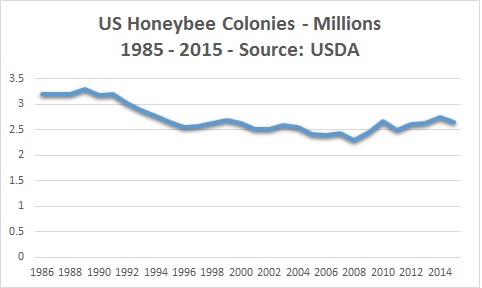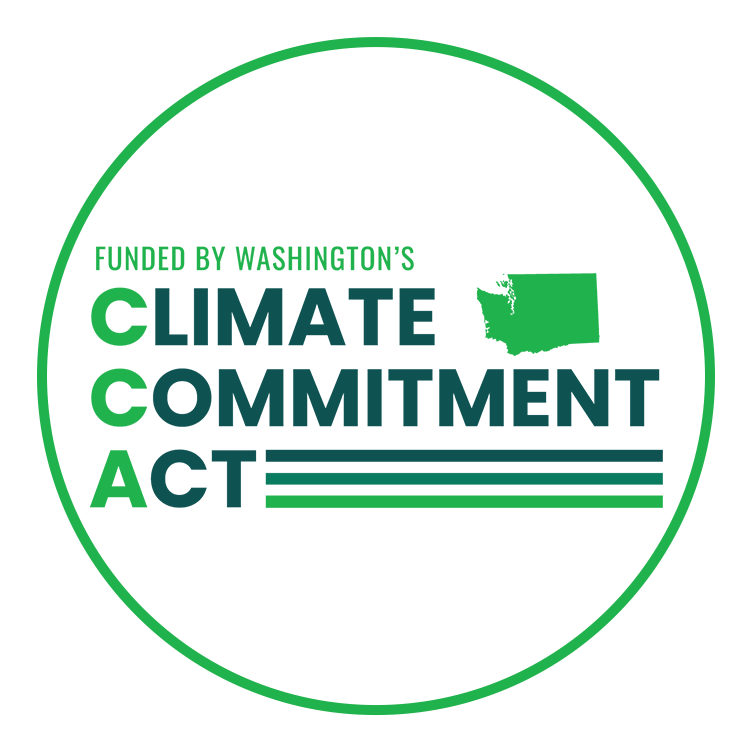Environment Washington's Anti-Science Ignorance on Honeybees

If there was ever an example of how little the environmental community understands (or cares about) science, it is the case of honeybees.
In a feverish press release last week, Environment Washington wrote, “Scientists, farmers, and beekeepers have sounded the alarm: bee colonies are in collapse…and now each year we’re losing between 30 – 40% of all bee colonies.” The release calls for a ban on a pesticide called neonics, writing “Scientists point to a class of bee-killing insecticides…as a major cause of this massive bee die-off.”
None of that is accurate. A quick look at data from beekeepers and the US. Department of Agriculture (USDA), demonstrates how wrong it is. An interview with the head of Environment Washington made clear they know almost nothing about honeybees and are only using bees as an excuse for their unscientific, ideological agenda.
Bruce Speight, Executive Director of Environment Washington, told John Carlson on KVI that, “in the last two years there has been a 30-40% decline in bees.” This is simply false.
In fact, the total number of honeybee hives in the US is higher than it was in 1995, twenty years ago. Each year, a certain percentage of hives die, usually during the winter. This is normal. The mortality rate has been higher in the last decade than previously, but beekeepers – like me – have been replacing those hives faster than they are dying. Overall, populations are up.
Second, Speight claimed “there have been numerous studies” claiming that neonics are causing the honeybee mortality. This is also false.
First, studies indicating neonics can harm bees have occurred only in the lab, where honeybees are exposed to high dosages of the insecticide. None of the studies, however, have been replicated in the field. None. The studies themselves admit this. One study cited by Seattle City Councilman Mike O’Brien admitted “Limited field studies with free-living bee colonies have largely been inconsistent and proved difficult to perform.” Scientists admit they don’t have any reliable evidence.
Second, the USDA has a major survey of beekeepers, asking them about their hives and what they think caused their hives to die. Pesticides of all kinds were cited in only 10 percent of hive deaths. Additionally, the USDA survey found that the group with the highest exposure to pesticides – commercial beekeepers – has the lowest level of hive mortality. This runs counter to the claims that neonics or other pesticides are the cause. In fact, many beekeepers fear that neonics might be replaced with other pesticides that are even more harmful to bees, making the problem worse.
The USDA points the finger elsewhere. The varroa mite, which attaches itself to honeybees, weakening them and spreading disease, is having more impact than previously understood. The USDA release had this to say about the impact of varroa:
“Many backyard beekeepers don’t have any varroa control strategies in place. We think this results in colonies collapsing and spreading mites to neighboring colonies that are otherwise well-managed for mites,” said Nathalie Steinhauer, a graduate student in the UMD Department of Entomology who leads the data collection efforts for the annual survey. “We are seeing more evidence to suggest that good beekeepers who take the right steps to control mites are losing colonies in this way, through no fault of their own.”
Beekeepers and scientists – who see honeybees as more than just a tool for a political agenda – are not focused on pesticides.
Finally, emblematic of the environmental community’s favorite reflex, Speight tried to blame honeybee mortality on “climate change.” This is embarrassingly ignorant.
Honeybees are not native to North America. They thrive everywhere from California to North Dakota. They survive in a tremendous range of climates. They are extremely adaptable and are not sensitive to climate. In the last decade, as honeybee mortality has increased, global temperatures have increased 0.4 degrees F. To claim that temperature variation could impact honeybees who can tolerate average temperatures from 60 degrees to 100 degrees is sheer nonsense.
For beekeepers, farmers and scientists, honeybees are more than just a tool to advance an ideological agenda. For Environment Washington, however, they are just the latest excuse to push regulation and feel like they are helping the environment. It is time to stop ignoring the science and spreading misinformation. If Environment Washington continues to ignore the science, it will be clear they care more about politics than science or the future of honeybees.





